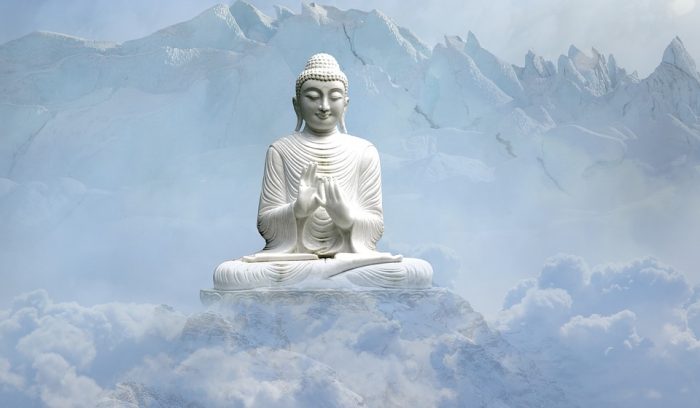Author’s note: I apologize in advance if this seems pedantic or preachy to anyone—I mean it as a heart offering and exploration only.
~
Is secular Buddhism the answer?
I have been a reluctant Buddhist since birth.
I grew up in what is now called the Shambhala sangha (community) and have practiced, studied, and taught in a few different traditions for almost 40 years now. I’ve often been too close to the “action” to want to remain in any group for long, however, because everywhere I turn, a version of our not-so-pretty humanness displays itself.
I’ve opted to step away each time it’s gotten too hot rather than face my own messy humanness, my habit being to run away and not step up when it gets challenging. In light of what has transpired in Shambhala and in other sanghas recently—I no longer think this approach is possible.
These teachings and practices are like breath and water. They are sustenance.
Without them, there is only confusion and the suffering that accompanies it.
In times like these, many have suggested we move away from traditional forms and consider a more secular Buddhism, devoid of the power dynamics which may have contributed to a whole host of issues including “normalizing” abuse. The belief is that if we don’t give away our power to a guru or senior teacher, we will be less likely to find ourselves a victim.
This does make sense on many levels; however, my concern with an offer of “secular” Buddhism is that in trying to avoid the parts of this path that are messy and fraught with danger, we might also abandon what’s possible on this journey to awakening.
As Buddhism has spread around the globe over the centuries, it has adopted the beliefs and flavors and customs of the people it encounters. We are now faced with an opportunity to bring ourselves and our values, beliefs, and practices to create something new within this long wisdom tradition that has been of benefit to so many.
Maybe we call this equality, clarity, transparency, no bullsh*t dharma. Western 21st century dharma: heart wide open, and ego teetering on the brink of the unknown. Brave and fearless—not because we have a fearless leader we abandon ourselves to—but because we are rooted in our own paths of awakening; because we’re willing to stand here afraid and often unsure, pulses racing. Sometimes wise and generous, sometimes bumbling.
Is this “secular?” I’m not sure. Maybe it’s simply being a Buddhist practitioner no longer hiding under the veil of illusion.
Let us not abandon the opportunity of deeper practice and strip ordinary magic out of our lives simply because the archaic and sometimes damaging beliefs and practices were also carried here with the teachers who introduced us to this path.
Tibetan Vajrayana or Tantra brilliantly uses deities for a diverse body of practices that teach us how to embrace every aspect of our humanness—which is both glorious and frightening. Deity practices at their most basic help us invite our shadow to come out and play. When we do that, we’re able to fully make friends with aspects of ourselves we’ve been avoiding or pretending aren’t there.
Zen practices, some of which we have adopted in Shambhala such as ikebana (Japanese flower arranging) and kyudo (archery), help connect us to the earth and sky and provide embodied vehicles for direct realization, even from the first moment of practice.
Theravada Buddhism has provided a whole feast of teachings and practices in the style of the people who offer it: the four foundations of mindfulness practice provide step-by-step instruction on how to sit, simply be, experience body, speech, and mind, and slowly unfold to the moment at hand. In my personal opinion, this detailed and meticulous approach may be the best technique for beginning practitioners of mindfulness.
Even samaya has its place. When we stand on the precipice shaking and afraid, ego raring its head and screaming danger louder than we knew was even possible in the silence, we need a lifeline—someone skilled in the groundlessness of realization. But we can do this with a spiritual friend, not a guru. We can do this for each other in a loving, caring, and care-full way.
We do need to allow others to hold us in that sacred space or we are only scratching the surface of seeing.
There are so many tools traditional Buddhism provides us. Let’s not, as they say, throw the baby out with the bath water.
~









Read 0 comments and reply